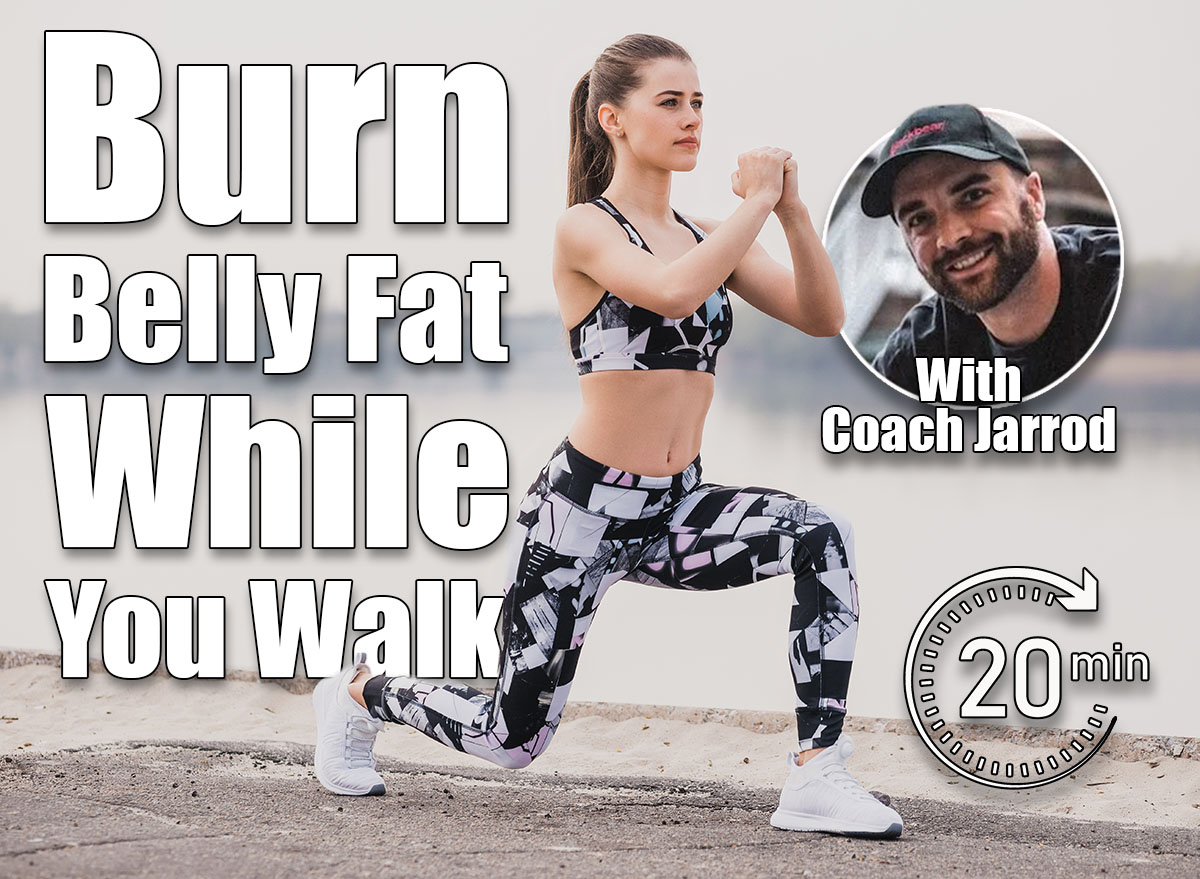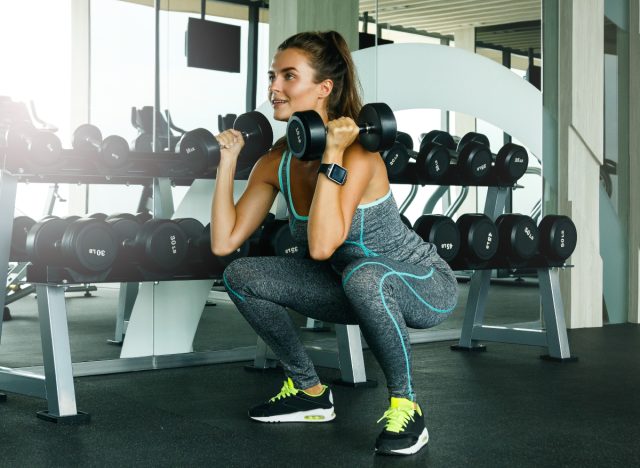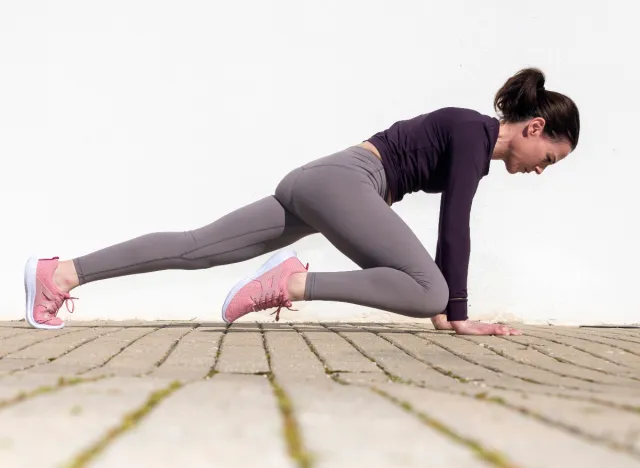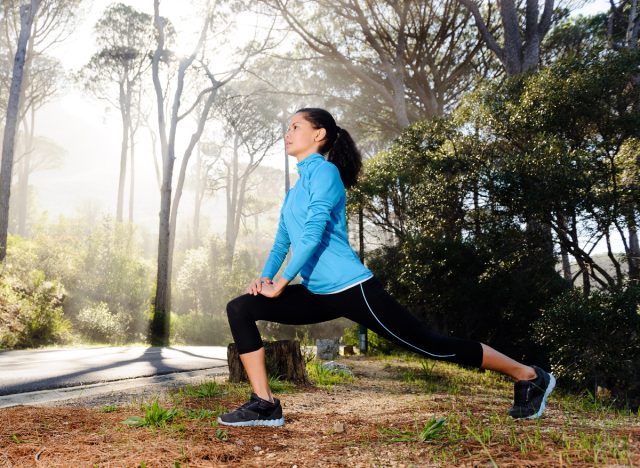If You Can Finish This 20-Minute Walking & Strength Workout, You’re Burning Fat Like a Pro

When you’re short on time but big on results, combining walking and strength training into one fat-burning, metabolism-boosting session is a total game-changer. Not only does this style of training scorch calories and engage major muscle groups, but it also helps trim stubborn belly fat by maximizing every second of your workout.
Walking may seem simple, but pairing it with dynamic strength movements, such as kettlebell swings, thrusters, and mountain climbers, makes it a powerful combination that burns fat and tones your body from head to toe. A bonus? You don’t need a fancy gym or a full hour to make it work. In 20 minutes, you can crank up your heart rate, build muscle, and leave your core fired up.
In this article, we’ll break down why this hybrid training method is so effective and provide you with the exact 20-minute workout you can do anytime, anywhere to start seeing results quickly.
Why Combining Walking & Strength Workouts Melts Belly Fat Fast
Walking on its own is a fantastic fat-loss tool. Add strength exercises, and you turn up the burn. Here’s why this one-two punch is so powerful:
- Boosts Calorie Burn: Walking gets your heart rate up, but when you alternate it with strength moves, you enter a zone of elevated calorie expenditure known as EPOC (excess post-exercise oxygen consumption), which helps you burn fat long after wrapping up.
- Builds Lean Muscle: Strength exercises help build and preserve muscle mass, which is critical for boosting metabolism and reducing fat, especially around the midsection.
- Reduces Belly Fat More Effectively: Studies show combining cardio and resistance training is more effective at reducing abdominal fat compared to doing either one alone.
- Increases Workout Efficiency: You get the fat-burning benefits of cardio and the muscle-toning benefits of strength in one fast, seamless workout.
- Easy to Modify: You can adjust the pace, intensity, and resistance based on your fitness level, making it scalable for both beginners and more advanced athletes.
The 20-Minute Walking & Strength Workout To Burn Belly Fat Fast
What You Need:
All you need is 20 minutes, a pair of dumbbells or a kettlebell (optional), and some space to walk. This circuit alternates one minute of walking with one minute of strength-based exercises—four rounds total.
You’ll perform:
- 4 total strength moves
- 4 one-minute walking segments
- Repeat the whole circuit twice
The Routine:
- Brisk Walk: 1 minute
- Kettlebell Swings: 15 reps
- Walk: 1 minute
- Thrusters (Dumbbell or Kettlebell): 12 reps
- Walk: 1 minute
- Mountain Climbers: 30 seconds fast + 15 seconds slow x 2
- Walk: 1 minute
- Alternating Reverse Lunges with a Twist: 10 reps per side
Repeat for 2 total rounds
Directions:
- Start with a one-minute brisk walk at a challenging pace.
- After each walking segment, perform the following strength move at a controlled but intense effort.
- Focus on quality form and controlled breathing.
- Repeat the whole circuit twice for a total of 20 minutes.
- Finish with a cool-down walk or light stretching.
How To Do Each Exercise
Kettlebell Swings

How to do it:
- Stand with feet shoulder-width apart and hold the kettlebell with both hands.
- Hinge at your hips (not your knees), swing the kettlebell back between your legs.
- Explosively thrust your hips forward to swing the bell to chest height.
- Let it swing back naturally and repeat for 15 reps.
Thrusters (Dumbbell or Kettlebell)

How to do it:
- Hold a dumbbell in each hand at shoulder height or one kettlebell at your chest.
- Lower into a squat by pushing your hips back and keeping your chest upright.
- Drive through your heels to stand, pressing the weights overhead as you rise.
- Lower the weights back to the starting position and repeat for 12 reps.
Mountain Climbers (Fast + Slow)

How to do it:
- Get into a high plank position with shoulders stacked over wrists.
- Drive your right knee toward your chest, then quickly switch to the left.
- Go fast for 30 seconds.
- Transition to slow, controlled mountain climbers for 15 seconds.
- Repeat this fast/slow cycle one more time.
Alternating Reverse Lunges with a Twist

How to do it:
- Hold a dumbbell or medicine ball at your chest.
- Step back with your right leg into a reverse lunge.
- At the bottom, twist your torso toward your front leg.
- Return to standing and repeat on the other side.
- Perform 10 reps per leg.
How To Get the Most Out of Your 20-Minute Workout
Want to maximize fat burn and results from this quick-hitting routine? These simple, actionable tips can take your 20-minute effort from good to great, especially if your goal is to shrink belly fat and build lean muscle.
- Power Walk With Purpose: Don’t stroll; walk like you’re late. Pump your arms, engage your core, and aim for a brisk pace (think 3.5–4.5 mph) that elevates your heart rate while still allowing you to speak in short sentences.
- Keep Rest Minimal: Transition quickly from walking to the strength move to maintain a high heart rate. The less downtime, the more calorie burn.
- Engage Your Core Throughout: Whether you’re walking or lifting, keep your core tight. This improves posture, enhances balance, and directly targets the muscles around your midsection.
- Add Light Weights or a Vest: If you’re more advanced, wear a weighted vest or carry light dumbbells during your walking intervals to increase intensity and calorie burn.
- Focus on Full-Body Strength Moves: Exercises like thrusters, swings, and mountain climbers work multiple muscle groups simultaneously, providing a greater burn per repetition.
- Control the Eccentric (Lowering) Phase: Slow down the descent of movements, such as lunges and squats. This increases time under tension, which helps build strength and muscle.
- Track Your Progress: Whether it’s total reps, heart rate, or perceived effort, tracking helps you push just a little harder each time, leading to better long-term results.
References
- National Academy of Sports Medicine. “Excess Post-Exercise Oxygen Consumption: What Is EPOC?” NASM Blog, 17 Feb. 2022, https://blog.nasm.org/excess-post-exercise-oxygen-consumption. Accessed 23 June 2025.
- Thomas, Michael H, and Steve P Burns. “Increasing Lean Mass and Strength: A Comparison of High Frequency Strength Training to Lower Frequency Strength Training.” International journal of exercise science vol. 9,2 159-167. 1 Apr. 2016, doi:10.70252/HDLQ5133
- Tan, Jerrican et al. “The Effects of Combining Aerobic and Heavy Resistance Training on Body Composition, Muscle Hypertrophy, and Exercise Satisfaction in Physically Active Adults.” Healthcare (Basel, Switzerland) vol. 11,17 2443. 31 Aug. 2023, doi:10.3390/healthcare11172443